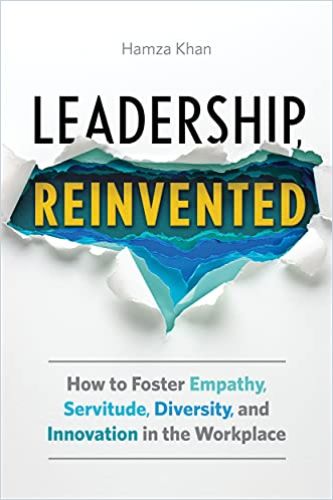Hamza Khan, author of The Burnout Gamble, offers a comprehensive guide to developing your company and yourself to deal with constant change.

Cope With Change Step by Step
Prepare your organization for change and resilience now instead of waiting to react to the tumult of an uncertain future, advises Hamza Khan, managing director of Canada’s Student Life Network and author of The Burnout Gamble.
Khan, an award-winning marketer, explains that today’s constantly changing change creates an unstable VUCA (volatile, uncertain, complex and ambiguous) business environment. Amid this storm, he says, organizations must get ready for profound change. His wise instructions call for reinventing yourself and then reinventing your organization by restructuring operations and rebuilding your strategies in advance of trauma.
Change must happen long before change is required.Hamza Khan
Khan’s peers found much to favor in these pages. James Hunt, co-author of Leadership: Regional & Global Perspectives, said, “This… is packed with incredibly valuable insights into leading humanely and with purpose. Meticulously researched, flawlessly structured and representing leaders from a diverse array of backgrounds, this is undeniably one of the most perspicacious leadership books written in the last 20 years.” Eileen McDargh, CEO of The Resiliency Group and author of Burnout To Breakthrough, wrote, “Khan has…crafted a brilliant, strong and straightforward path for forging humanity with strategy. Documented and directive. Practical yet profound.”
Unsettling Change
Khan argues that when organizations – companies, government entities and social ventures – fail, it’s almost always because their leaders don’t plan, restructure and reinvent their organizations to manage and survive unsettling change.
The author notes that in today’s high-octane business environment, accelerated change is the one certain constant. He cautions that organizations that can’t keep up may find themselves left behind. As evidence, he cites the 88% of Fortune Global 500 companies that have closed, filed bankruptcy or been bought out since 1965.
If the past had taught me anything, it was that…something unpredictable will always happen; bad news becomes an inevitability. (Bob Iger, former CEO, Walt Disney Company)
Khan believes leaders are responsible for helping their organizations reinvent themselves to stay current and viable, and thus they must first undertake personal reinvention. He charges leaders with supplying fresh perspectives and introducing new strategic thinking to disrupt the status quo and renew their organizations.
Khan holds that the personality and character of a leader fortifies his or her ability to guide an organization through tumultuous change. He says a great change leader must be human-centric, change-friendly, self-disrupting and values-driven. Committed change leaders, Khan explains, embrace the “bright-SIDE” values in his subtitle: “servitude, innovation, diversity and empathy.”
Road Map
To become an effective change leader, Khan instructs, you should follow a road map to guide your professional growth. And then he provides the map: four linear, organized sets of six steps you can take as a leader to foster empathy, be of service, lead diversity and spark innovation.
To inculcate empathy, he says, examine your company’s mission, culture and values as a starting point. Listen to your employees; identify any gaps between your brand and your customers’ perceptions of it; meet regularly with frontline workers; learn what helps employees engage with their work; and maintain hands-on involvement in team projects.
To be of service to your teams, you must first learn their strengths. (He suggests using tests such as StrengthsFinder, Lumina Spark and the Myers-Briggs Type Indicator.) Encourage your firm to create professional development opportunities; ask your team members what stops them from doing their best work and eliminate those impediments; encourage them to share details of their weekend activities to build team unity; establish a searchable repository of institutional knowledge; and treat employees like co-owners of the company.
Today’s leaders must be able to reinvigorate themselves to create lasting organizational viability.Hamza Khan
Khan’s third set of steps supports organizational diversity. Begin by noticing which demographics are not present in your organization and build inclusivity. Think about whether your firm excludes certain categories of people, and confront unconscious organizational biases. Set up leadership trial periods by asking candidates to manage a high-profile project, revise an organizational system or coach a junior employee. Have your employees explore new social activities, such as volunteering at charity events. Be alert to teachable moments you can use to talk to people about problem behavior.
To help your organization become more innovative, Khan recommends creating a separate division focused on innovation. Use chaos engineering to foment stress testing and develop constraints on likely problems or blockage points. Give your innovation projects the time and money they need. Use market research to learn about your competitors, know your end users and brainstorm new ideas as if you have no limitations.
Service, Innovation and Equality
Khan says that leaders who support strong values should showcase their awareness, tolerance, advocacy, vigilance, empathy and optimism to inspire others to follow their lead.
To successfully lead an organization in the future depends on a leader’s willingness to embrace change in the present.
As cautionary tales, he offers familiar sagas. First, he covers Blockbuster’s downfall, tracking how it faded when Netflix’s “online gamble” succeeded. Then, he tracks the fate of Kodak, whose leaders believed digital photography was a fad. These failures stemmed from their leaders’ inability to reinvent themselves or to adapt to change.
Guidance
Khan takes a comprehensive overview of the human aspect of disruptive change and how it manifests in organizations. Focusing on emotion and perception, he explains how to engage your employees and develop organizational flexibility. Khan’s clear writing and persuasive sense of organization make his approach exemplary. By breaking down the change journey into smaller segments, he enables readers to develop themselves and their companies step by step. This approach helps leaders and readers measure their progress and discern when they are ready for the next step.
Other insightful works on reinventing leadership include Dare To Lead by Brené Brown, Emotional Intelligence for the Modern Leader by Christopher D. Connors and Start With Why by Simon Sinek.













